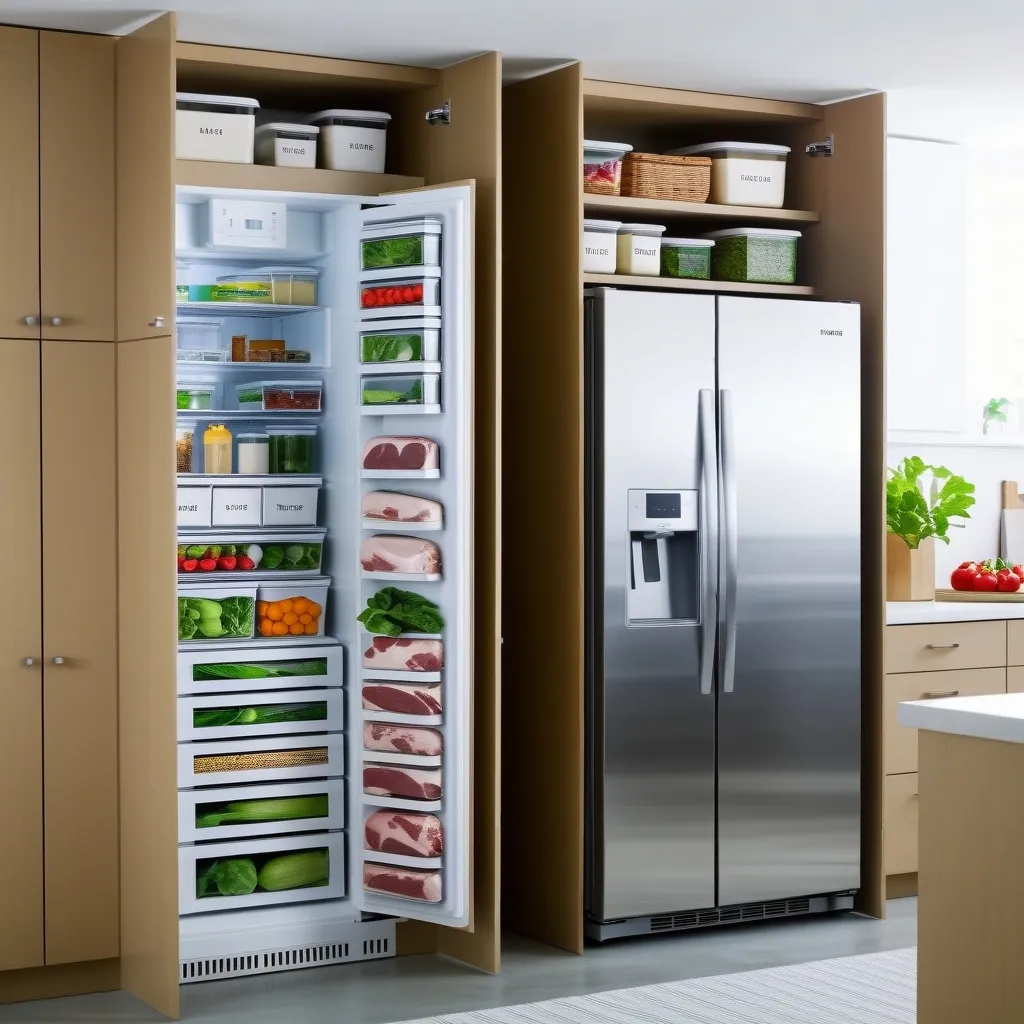Alright folks, let’s dive into something everyone can benefit from—smart meal storage. This isn’t just about preventing your cucumbers from turning into mush. It’s a way to save money, reduce waste, and keep your kitchen running smoothly. Here’s everything you need to know to become a food storage pro.
Understanding the Basics of Food Storage
If you think this is just about stuffing everything into the fridge or pantry, think again. Proper food storage means knowing your stuff—like what goes where and how to keep things fresh for longer. Let’s break it down.
Refrigerator Storage
Your fridge is pretty much the MVP when it comes to keeping food fresh. Here are some sweet tips to get the most out of it:
Dairy and Eggs: Keep dairy products on a shelf in the fridge, not in the door. The door’s temperature can go up and down, which isn’t great for milk and such. And eggs? They can last 3 to 5 weeks beyond the date on the carton. Want to test if they’re still good? Pop an egg in a glass of water; if it sinks, it’s still fresh.
Meat: Meat’s a bit more high-maintenance. Keep it on the coldest shelf (usually the bottom one). If you’re not cooking it within two days, freeze it in an airtight container.
Fruits and Veggies: Some fruits like apples and bananas give off ethylene gas, speeding up the ripening of other fruits and veggies. Store them separately. Most fruits freeze well—just peel, chop into bite-sized pieces, freeze on a baking sheet, and then move them to an airtight container.
Condiments and Drinks: Condiments and non-perishable items are best kept in the fridge door. Save the top shelf for drinks and leftovers.
Freezer Storage
Freezers are like the long-term savings account for food. Here’s how to use yours like a boss:
Freezing Meat: Freeze bones and carcasses to make stock later—it’s a game-changer for soups and stews. Portion out meat into airtight containers or freezer bags to dodge freezer burn.
Freezing Fruits and Veggies: Most veggies can be blanched and frozen. Peel and chop fruits before freezing them, so they’re smoothie and baking-ready.
Freeze-Dried Foods: These are awesome for emergencies. Freeze-dried foods and MREs (Meals Ready to Eat) hardly take up space and can be stored at the bottom of your pantry. Rotate them regularly to keep your emergency supplies fresh.
Pantry Storage
Your pantry holds the non-perishable stuff. Here’s how to keep them fresh:
Grains: Store bread, pasta, and cereal in airtight containers. If bread or cereal starts going stale, bake it lightly to refresh it or freeze it to make breadcrumbs later.
Root Veggies: Keep sweet potatoes and potatoes in a cool, dark place. This stretches out their shelf life, making them last longer.
Hygiene Products: Don’t forget about essentials like TP, razors, toothpaste, and deodorant. These items don’t spoil and are critical to have, especially in emergencies.
Labeling and Inventory
Keeping tabs on what you have is crucial. Here’s why this matters:
Labeling: Use clear, labeled containers for leftovers. This helps you use them up before they go bad. Jot down purchase or expiration dates to avoid wastage.
Inventory: A running inventory of your pantry, fridge, and freezer helps you stay organized. Use a magnetic fridge board or a digital app to keep track of what you have and when it expires.
Proper Temperature Management
Temperature plays a big role in food freshness. Here’s how to master it:
Fridge Temperature: Keep your fridge at the right temperature. The bottom shelf is the coldest, perfect for raw meat. The top shelf is slightly warmer, ideal for drinks and condiments.
Cool, Dark Places: Store items like potatoes, onions, and carrots in a cool, dark place to mimic a root cellar and extend their shelf life.
Choosing the Right Containers
The type of storage container you use can make all the difference. Here’s what you need:
Airtight Containers: Essential for storing grains, nuts, and other dry goods to keep them fresh. For fruits and veggies, go for containers that allow airflow to prevent moisture buildup.
Transparent Containers: Using see-through containers makes it easy to see what you have. This helps you plan meals around what needs to be eaten first, saving you from overbuying and reducing waste.
Digital Integration
Embrace the power of technology for smart food storage.
Smart Apps: Use apps that alert you when items are about to expire. These can also suggest shopping lists and recipes based on what’s in your kitchen, helping you use up perishable items efficiently.
Rotating Your Stock
Rotating your stock saves you from munching on expired food.
First In, First Out: Organize your pantry like a grocery store. New stuff goes in the back, and the older items stay upfront. This way, you’ll naturally grab the older items first.
Regular Inventory Checks: Keep your inventory updated to make sure nothing gets lost or overlooked. This helps with meal planning and cuts down waste.
Extending Shelf Life
You can extend the shelf life of your food with these tricks:
Blanching and Freezing: Blanching veggies before freezing them preserves their nutrients and texture. Dip them in boiling water, then plunge them into ice water before freezing.
Reviving Wilted Greens: Wilted greens can be saved! Add a tablespoon of sugar to water, cut the stems, and store them with the stems in the sugar water.
Emergency Preparedness
Smart food storage isn’t just for everyday meals; it’s also for emergencies.
Copy Canning: Buy two of an item—one for now and one for later. Gradually, you’ll build up your stores without a big upfront cost.
Storing Water: Don’t forget water for emergencies, not just for drinking but also for rehydrating freeze-dried foods. Square or rectangular jugs stack well and can be tucked away with your food supplies.
Wrapping It Up
Implementing these smart food storage techniques has endless benefits. You’ll reduce waste, save money, and keep your kitchen well-organized. Whether prepping for an emergency or simply wanting your groceries to last longer, these tips will help you hit the mark. So go ahead, dive into this food storage game and watch your kitchen transform!






